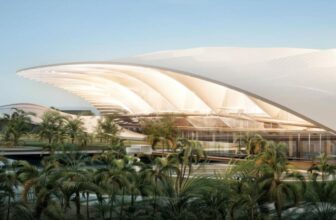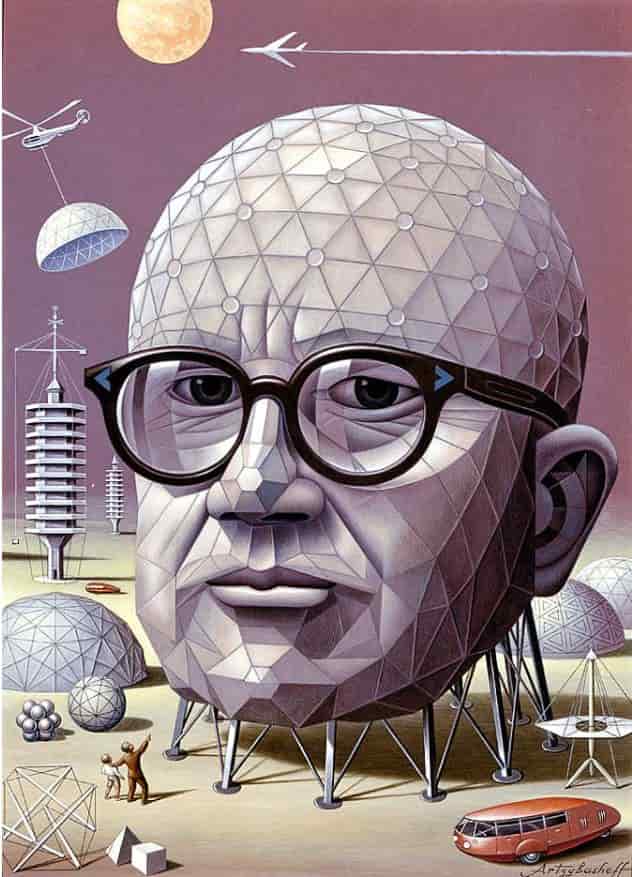Romanesque architecture style started in medieval Europe and is famous for its semi-circular arches. It is popular for its massiveness and power. Churches were the most important buildings that adopted this style. Moreover, Romanesque architecture churches are present across the world and are quite mesmerizing.
Evolution of Romanesque Style of Architecture
Romanesque Architecture flourished as the Architectural style during the late medieval era. The style draws inspiration from Roman architecture; and Byzantine and Islamic art. Romanesque Architecture boomed from the 6th to the 11th Century. Later, it evolved into the Gothic style of architecture in the 12th century.
Romanesque architecture style emerged after the four centuries of the dark ages. Therefore, structures made in this style of architecture came out to be highly defensive, yet decorative and beautiful.
Some facts about Romanesque Architecture:
- It draws inspiration from Roman architecture and there are many similarities between the two like round arches, stone materials, and the basilica style plan.
- The peak of Romanesque Architecture was between 1075 and 1125.
- It evolved as the very first architectural style in Europe.
- The characteristics of Romansque architecture structures vary a lot because of the massive climate difference in all the cities where it evolved.
- The most important Romanesque Architecture characteristic is its semi-circular arches.
Romanesque Architecture Characteristics:
- Arches and vaults are the main Romanesque Architecture features.
- The Buildings of this style convey fear, power, respect, wealth, envy, and awe.
- Stone ornamentation is abundant in the Romanesque style of Architecture.
- Romanesque buildings have massive walls with little openings. It helped the structures be strong and impenetrable.
- Building materials vary hugely as per the location; local stones and local construction techniques are quite common..
- Romanesque buildings were generally symmetrical.
- Buildings in this style had large towers, decorative arcading, and sturdy piers which are the defining Romanesque architecture characteristics.
- All the openings like doors, windows, and arcades have semi-circular arches.
- The buildings had a blocky appearance.
Prominent Expamples of Romanesque Architecture Style:
The main buildings seen in the Romanesque architectural style were Churches, castles, and monasteries. Romanesque Architecture Churches were the largest in number among all the construction that took place during this period. Some of the top examples are:
Baptistery Church, Florence:
The octagonal structure is one of the most ancient churches of the city and one of the most famous Romanesque Architecture Churches. A dome with eight wedges tops the structure. However, it can only be experienced from its interiors. The dome is completely hidden from the exteriors. The dome is the largest in the world, made with precious mosaics and topped by an octagonal lantern.
The exterior is rich with white Carrara and green pato marble. The interiors and exteriors of this church are exactly the opposite; the exterior being in white whereas the interiors are very colorful.
The Natural History Museum, London:
The museum with Romanesque Architecture features has dramatic arches and towers. Beautiful terracotta stones, in both interiors, as well as exteriors, decorate this structure. The terracotta used was both washable and acid-resistant. The use of sculptures also makes this museum building very playful and defines this beautiful structure’s function. Moreover, the ability to mold terracotta became a plus point for the use of sculptures.
This symmetrically shaped structure is spectacular with its golden facade look. The building facade measures 680 feet with two big towers and a recessed arched entrance.
This is one of the important buildings in London and its towers make their place in London’s skyline.
Wartburg Castle, Germany:
Rising 400 meters above a rock plateau, Wartburg Castle is a majestically designed castle in the late Romanesque style of architecture. The castle is the symbol of strength, situated at the top of the hill and surrounded by a forest. Castle’s main ceremonial building also currently hosts concerts and other events.
The arches and vaults are rich with colorful and decorative elements.
The presence of many famous paintings, glorious sculptures, tapestries, and splendid furniture inside this structure, making it an interesting space for fine arts lovers.
Cluny Abbey, France:
Cluney Abbey is the most famous monastery with three churches on the campus. These churches were made between the 4th and 12th centuries. The Romanesque sculptures present in this monastery are considered masterpieces.
The construction of this monastery was done in three phases. Most of the Cluney Abbey has been converted to ruins over time. However, a decent part still survives.
The vaults of this building are quite thin as compared to other Romanesque builings. The thinner walls increased the carpet area and also made the buildings look bigger. Cluney Abbey one of the finest Romanesque monasteries.
Leaning Tower of Pisa, Italy:
We all are very familiar with this magnificent piece of Architecture.
Surrounded by arches, this bell tower stands eight stories high.
The cylindrical tower’s unique inclination of 3.97 degrees is the reason behind its fame. Originally, the design of the structure did not have any inclination. However, during the construction process, it began to lean. Later, the leaning feature became the symbol of the white marble structure as well as the city. Moreover, the surprising fact is that the inclination angle keeps on increasing till now. However, advanced engineering has been helpful in controlling the same.
Leaning Tower of Pisa is the most famous Architectural example from the Romanesque style and also one of the New 7 Wonders of the World.
Romanesque style of architecture became the light to the dark architecture. This style was initiated for buildings with small windows like warehouses. However, slowly started evolving in other major structures as well.





